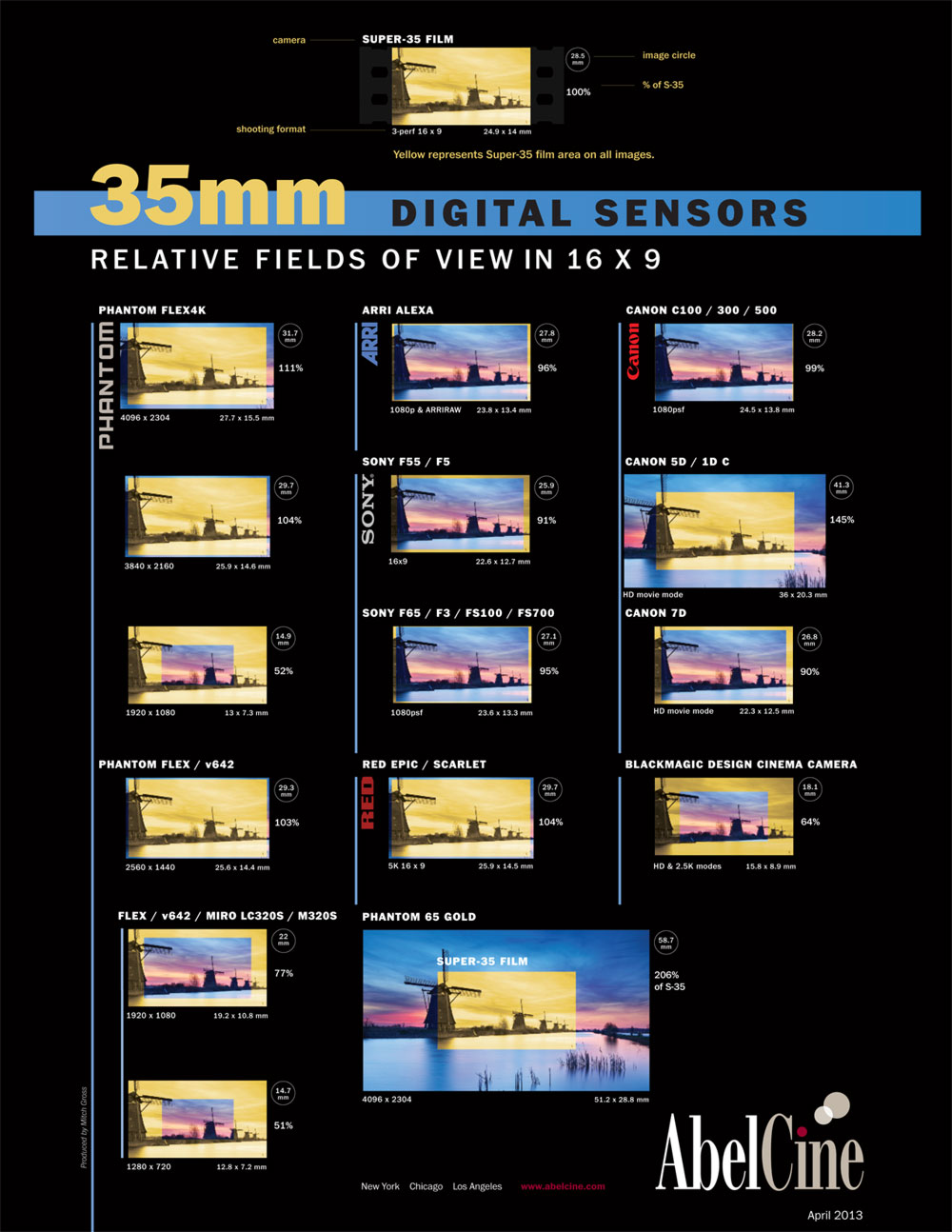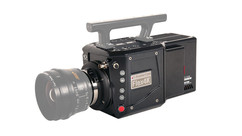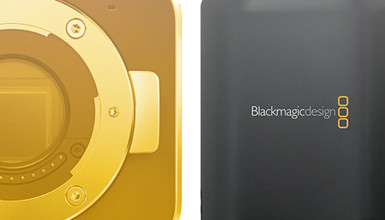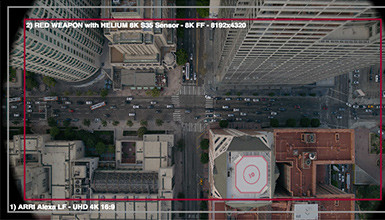The comparison standard is the Super-35 film frame. For clarity, an aspect ratio of 16x9 was selected for all of the cameras. This is both the native aspect ratio for most of the cameras as well as the HD framing standard. For cameras that can shoot various aspect ratios, the largest available 16x9 motion picture shooting mode was selected.
On all frames, the Super-35 image area has been indicated in Kodak yellow and the individual camera's image area indicated with a full color image. On sensors larger than Super-35, the sensor's larger image area has been indicated in full color. On sensors smaller than Super-35, the smaller image area has been indicated in full color.
The Shooting Format indicates the setting selected on the camera, with the physical size of the selected Shooting Format noted alongside in millimeters. The required Image Circle (projection size of light from the lens) has also been indicated in millimeters.
The chart is not meant to be a comparison of resolution or image quality in any way, but rather a specific comparison of relative frame sizes and their resulting fields of view.
Cameras referenced in the 35mm Digital Sensors Relative Fields of View in 16x9 chart include:
- Arri ALEXA
- Blackmagic Design Cinema Camera
- Canon C100, C300, C500, 5D, 1 DC, 7D
- Phantom 65 Gold, Flex4K, Flex, v642, Miro LC230S, Miro M320S
- RED Epic / Scarlet
- Sony F65, F55, F5, F3, FS100, FS700
A .pdf version of this chart is available to download.



















